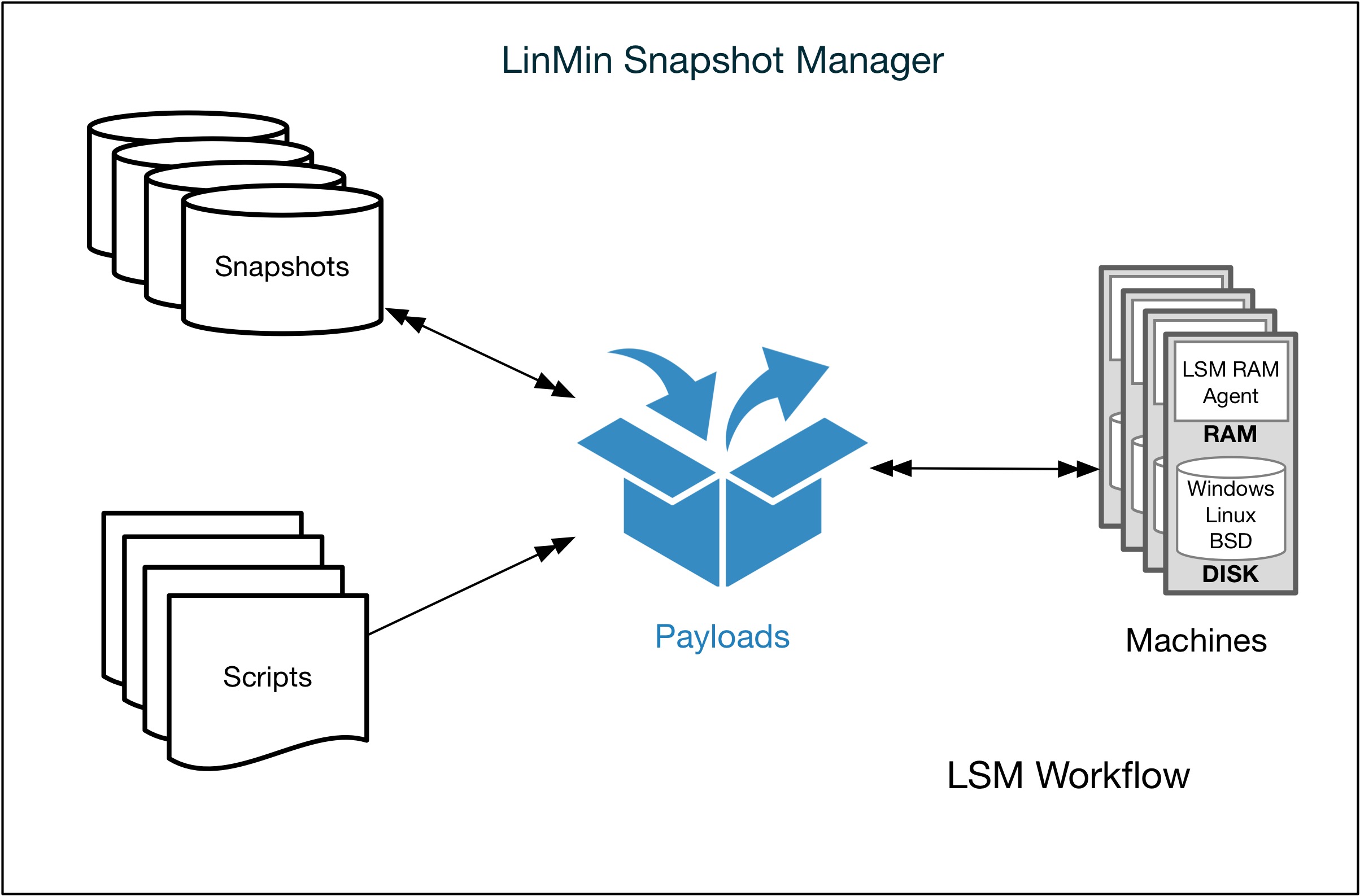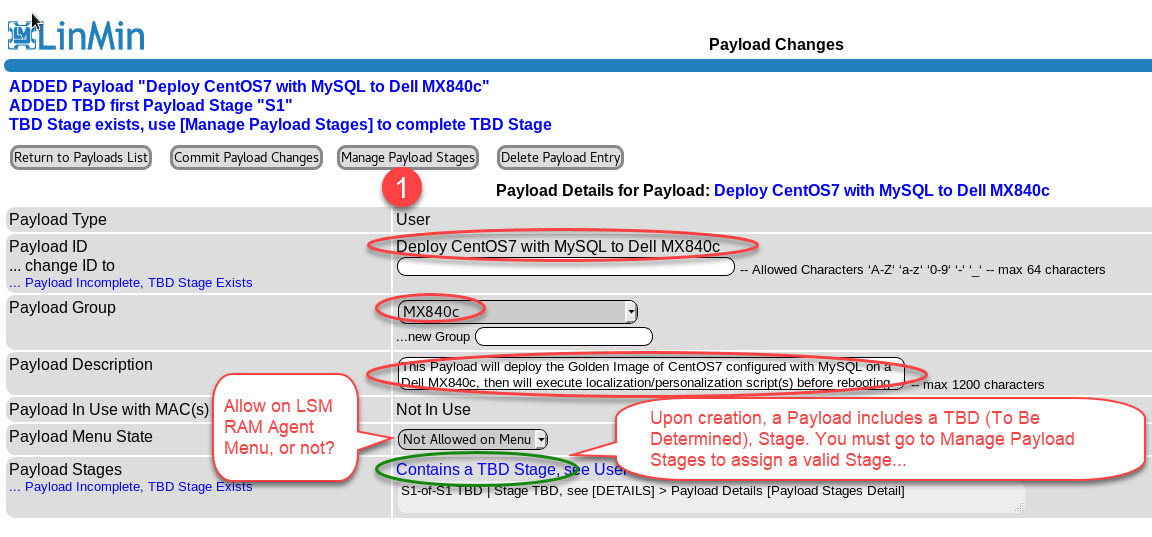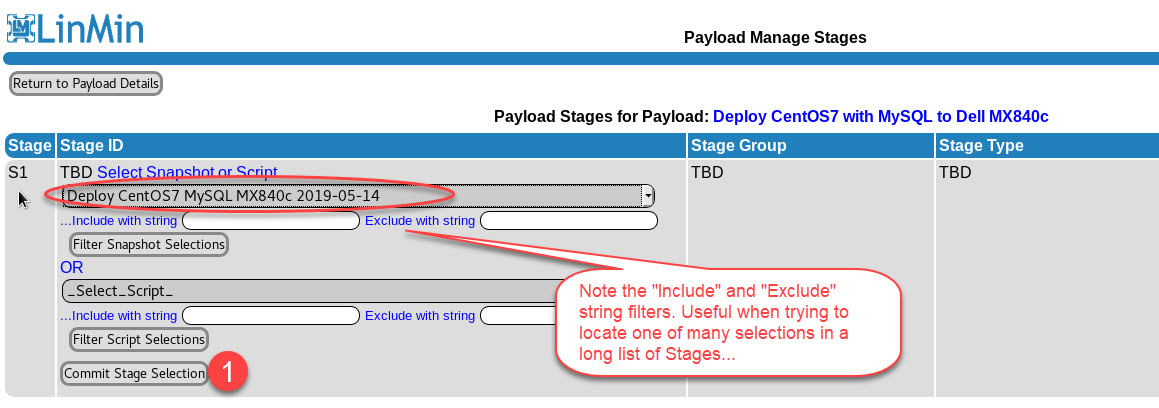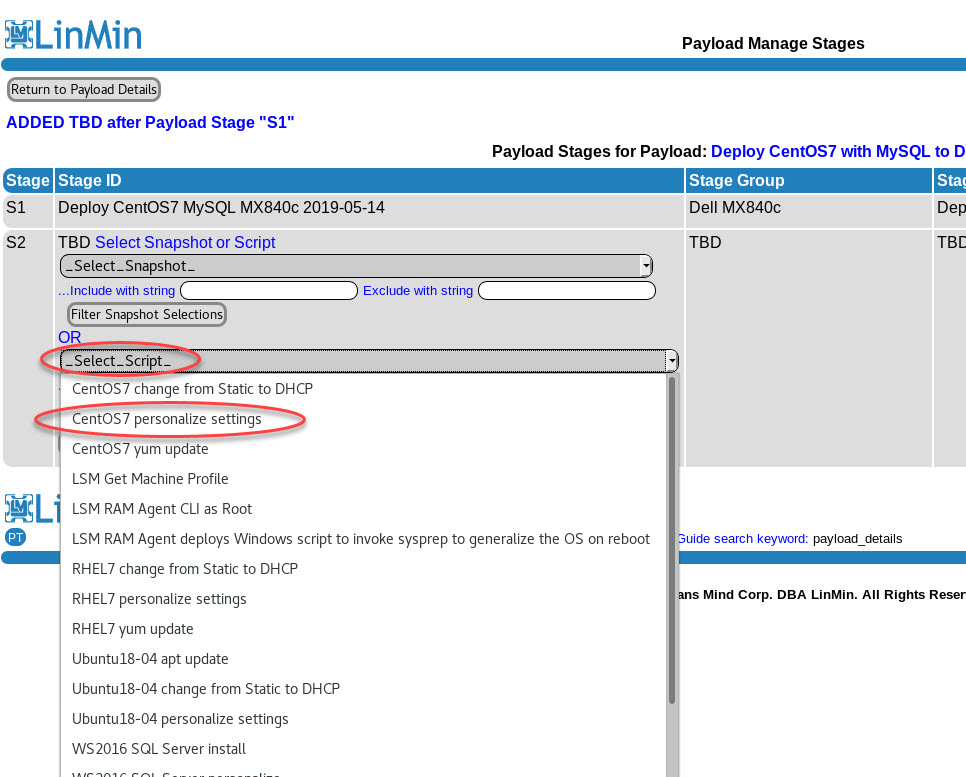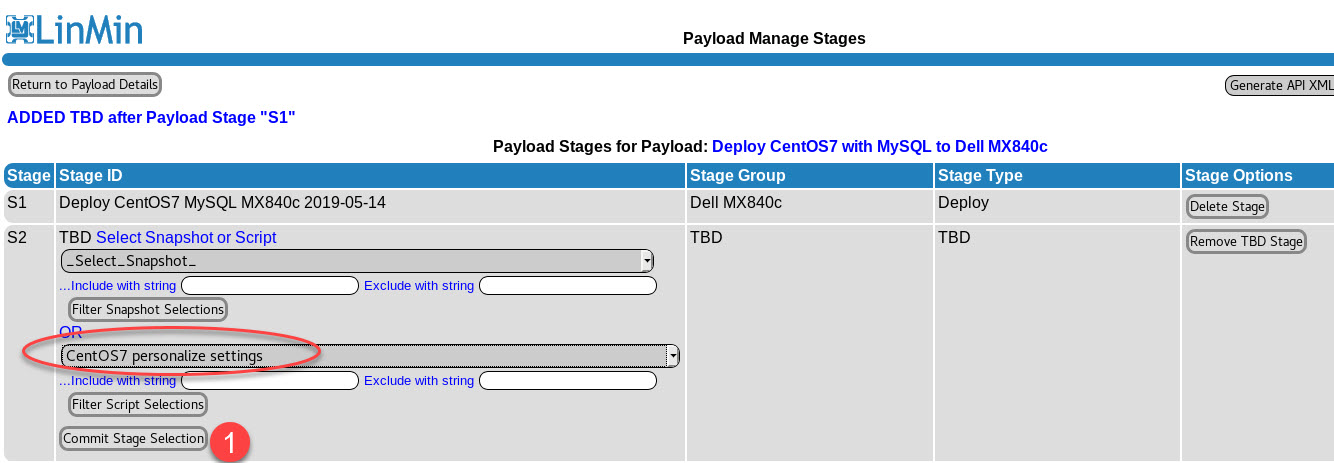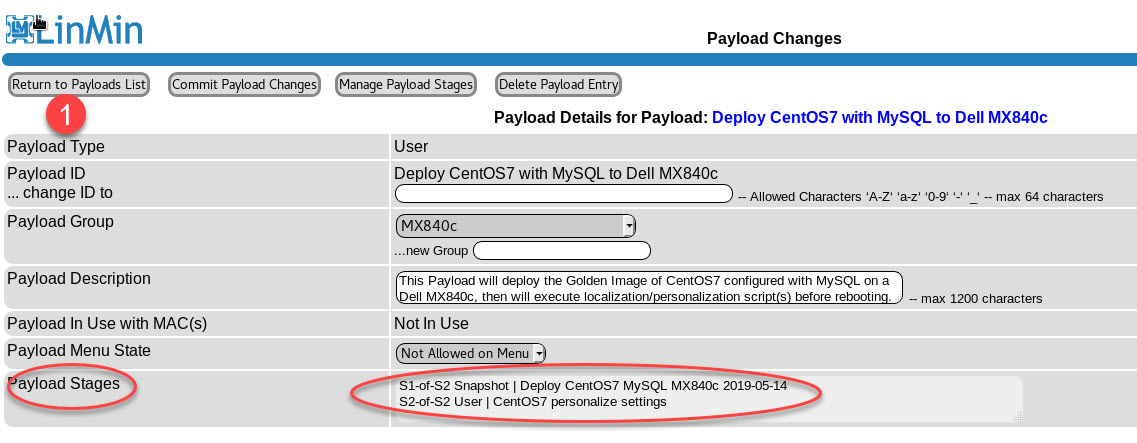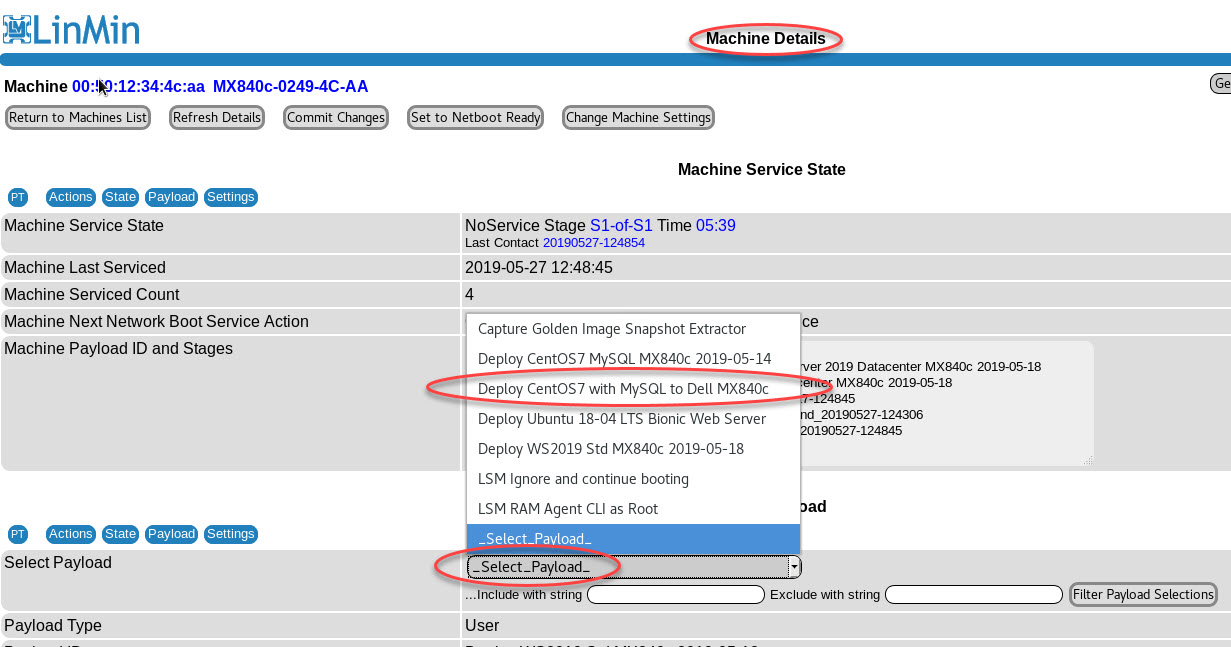Payloads are assigned to Machines to be processed by the LSM RAM Agent.
Payloads can have up to 9 Stages. Stages can be:
•Snapshots, and/or
•Scripts (LSM RAM Agent Scripts, which in turn can place files/scripts on the Target OS disk of your Windows or Linux system)
Add a User Payload:
Enter the Payload ID, and optionally change the default Group name and add a Description:
Upon Commit Payload Add, you will see your newly-entered values and must go to Manage Payload Stages to assign a valid Stage:
The Manage Payload Stages page now appears. The TBD Stage (a placeholder) must be replaced with either a Snapshot or a Script:
In this example, we will create a 2-Stage Payload. Stages can be either Snapshots or Scripts. Up to 9 Stages are allowed. Select your first Stage:
Make your Snapshot selection then Commit Stage Selection:
See your newly-added Stage (a Snapshot) and click Add Stage After (you can also add a Stage before this Stage):
To add a Script as your second Stage, select from the list of registered Scripts, in this case a User-provided RAM Agent Script:
After selecting your next Stage, click Commit Stage Selection:
Your second Stage has been added. If no additional Stages are needed, Return to Payload Details:
Notice your 2 Payload Stages. Now Return to Payloads List:
Observe your newly-added Payload in the Payloads List:
Your Payload can now be assigned to a registered Machine:
Your Payload can also be assigned as a default Payload to any unregistered Machine that PXE boots:
Example of the newly-created Payload assigned to a Machine set to the State "Netboot Ready":
Search keyword(s): payloads_list payload_details payload_stage_tbd
